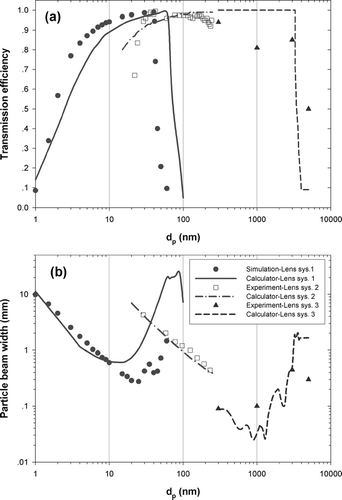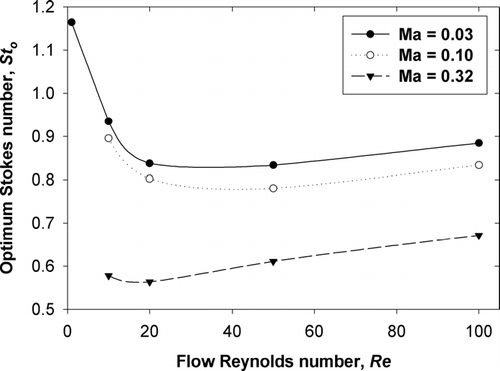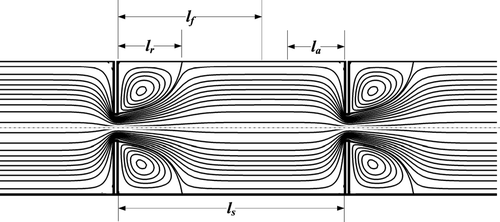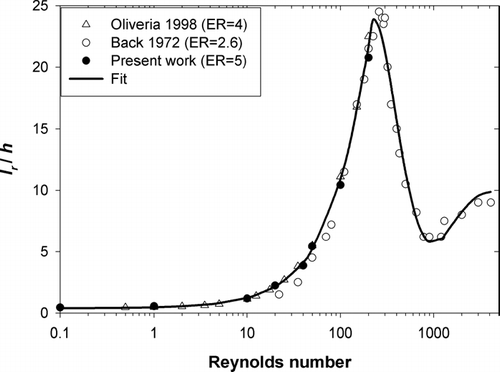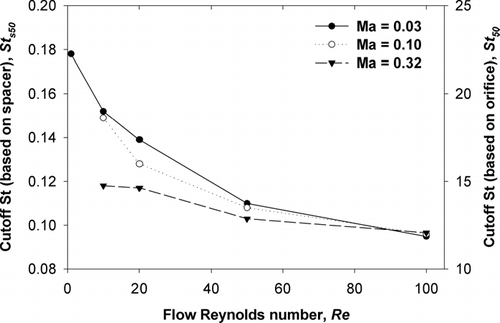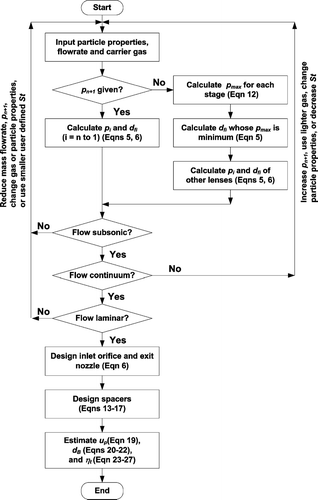Figures & data
FIG. 2 Near-axis particle contraction factor as a function of the Stokes number for various Reynolds numbers at three different subsonic Mach numbers. (a) Ma = 0.03; (b) Ma = 0.10; (c) Ma = 0.32.
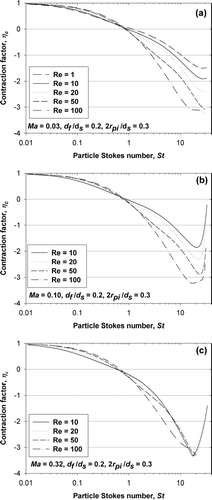
FIG. 4 The operating pressures for focusing unit density particles of different sizes as a function of orifice size using (a) air and (b) helium as the carrier gas. The flowrate is 0.1 slm. The two dash lines are the lower pressure limits p Ma and p Kn, respectively. The solid lines are p focusing for indicated sizes.
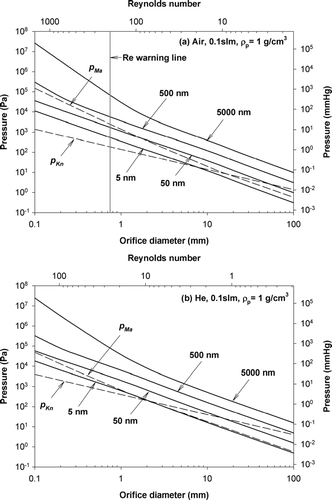
FIG. 7 Straight bored critical orifice and cylindrical relaxation chamber. (a) Flow streamlines and illustration of the half jet opening angle; (b) Trajectories of 100 nm (above axis) and 1 μ m (below axis) particles.
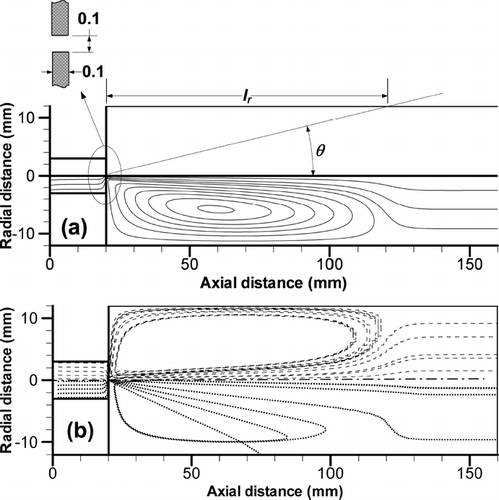
FIG. 8 Modified relaxation chamber with a conical divergent section to reduce recirculation and particle loss. (a) Flow streamlines (straight orifice); (b) Trajectories of 100 nm (above axis) and 1 μ m (below axis) particles (straight orifice); (c) Trajectories of 100 nm (above axis) and 1 μ m (below axis) particles (orifice with a chamfer).
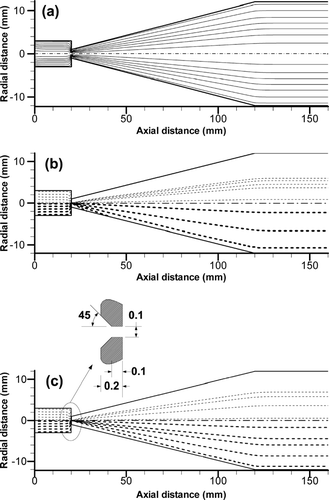
FIG. 9 Normalized particle terminal axial velocities downstream of several aerodynamic lens systems.

TABLE 1 Key features of four lens assemblies with step accelerating nozzles used in particle axial velocity comparison
FIG. 10 Particle transmission efficiency as a function of the Stokes number for various Reynolds numbers at three different subsonic Mach numbers. (a) Ma = 0.03; (b) Ma = 0.10; (c) Ma = 0.32.
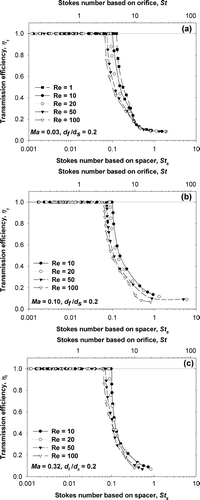
TABLE 2 Key features of the three aerodynamic lens systems used for the lens design tool validation
FIG. 13 Comparison of the lens calculator prediction with experimental or numerical evaluation for three lens systems in the literature. (a) Transmission efficiency; (b) Particle beam width. The legends of the two figures are the same.
